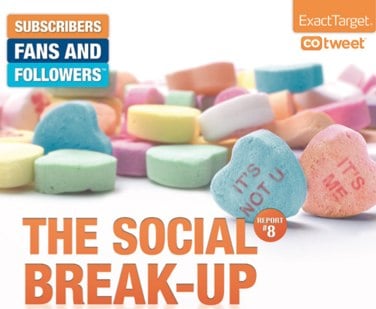Sharpening your people skills can help you maintain relationships and further your career. Find out how emotional intelligence and self-awareness improve communication and boost your confidence.
Life would be great if everybody got along and agreed on everything. But that is not the world we live in. To get along in the real world you need people skills and more. Whether to maintain relationships at home or at work, you need to know how to listen, how to make your wishes known, and how to resolve differences without conflict.
There are several strategies you can practice to improve your people skills in dealing with different personalities and challenging situations … and boost your confidence level in the process.
1. Develop Your Emotional Intelligence
Emotional intelligence allows us to be aware of and in charge of our emotions. Sharpening your emotional intelligence can help you to keep your emotions balanced and boost your confidence.
These strategies will help you develop your emotional intelligence:
- Learn to become more aware of your emotions and responses to certain situations. "Awareness is the foundational skill along the path to improved interpersonal skills," explains Tres Roeder, founder and president of Roeder Consulting in Cleveland, Ohio.
- Keep your emotions in balance. "In order to be in rhythm with others, you have to be in rhythm with yourself," notes Debbie Mandel, MA, stress-management specialist and author of Addicted to Stress.
- Recognize when you or others are stressed. When it comes to dealing with difficult situations, keep in mind that "proper timing can lead to a better outcome. If you or the other person is stressed, you will lose common ground," advises Mandel.
2. Resolve Conflict in a Positive Way
Be it at work or at home, a certain amount of conflict is unavoidable in any relationship.
Try these three ways to improve your people skills and resolve conflict in a positive way:
- Focus on the present. Holding onto old hurts or grudges makes it hard to move forward and build a better future.
- Think about respecting the other person, not controlling them. "The goal is to adapt to situations and people, not impose yourself on them. You can show respect for other people's opinions without agreeing with them," Mandel notes.
- Focus on compromise rather than on winning or losing. "In a constructive conflict the goal is to aim for an equitable compromise. There are no winners or losers," says Mandel.
3. Learn to Listen to Others
Talking is simple; real communication requires good listening skills.
Practice these tips to become a better listener:
- Pay attention to inflection. "Research shows the vast majority of communication occurs at the non-verbal level," advises Roeder. "Pay attention to not only what people are saying, but also how they are saying it."
- Take time to really listen before you respond. When others are speaking, instead of actually listening to them, many people are concentrating on what they plan to say next. Doing this can cause you to miss key elements of the other person's point and results in a lack of true communication. Take the time to be patient and simply listen before launching into your own point of view.
- Don't interrupt. "Let the other person speak without interrupting. Focusing on what another person is saying and making eye contact helps us truly understand what is meaningful," notes Mandel.
Asking for feedback, respecting cultural differences, and seeking out new people are just some of the ways you can improve your people skills. Paying attention to your emotional intelligence can pay off in increased self-confidence and better relationships.
Here are more ways to improve your interpersonal skills.
4. Ask for Feedback
When you take a moment to ask for feedback, you communicate better and you are more likely to hear and share ideas.
Understand why feedback is important:
- No one likes to be preached to. People don't want to feel like they are hearing a lecture. By asking for feedback and other people's opinions on a matter, you show that you are willing to hear and explore other points of view.
- Interpretation counts. What one person says and what another person hears are often two strikingly different things. Taking time to ask for feedback such as "Do you understand what I mean?" or "How would you have handled that situation?" is a good way to see if you are communicating effectively.
- Maintaining a positive attitude makes understanding easier. Asking for feedback shows that you have a confident and positive attitude. "People gravitate to positive people because good moods are contagious," says Mandel.
5. Respect and Be Aware of Cultural Differences
We learn most of our people skills from our parents and others in our community. When communicating with someone from a different culture, however, it is important to acknowledge cultural differences.
Try these approaches to ease communication:
- Understand eye contact. In our culture, direct eye contact often indicates sincerity while in another culture it could be considered rude.
- Expect some misunderstanding. In cross-cultural communication, it is best to go slowly and step back instead of getting frustrated. In our culture we like to get to the point. In other cultures it may be important to establish rapport before discussing potentially controversial issues. Keeping these differences in mind can minimize your frustration if and when you encounter any snags in communication.
- Get some help. To foster improved communication, it can be helpful to rely on an intermediary who understands both cultures.
6. Seek out New People
Meeting new people can enhance your creativity, help broaden your perspective on life, and improve your emotional intelligence. Remember these people skills when meeting someone new:
- Use body language. Pay attention to non-verbal communication cues such as good posture, appropriate eye contact, and friendly gestures.
- Listen up. Rely on good communication and listening skills. Truly get to know people by allowing them to express themselves without immediately interrupting with your own ideas.
- Be aware of the situation around you. "That includes awareness of yourself, awareness of others, and awareness of the situational context within which the relationship is occurring," says Roeder. Keeping external factors in mind, such as potential stressors and distractions, can make it easier to help navigate new situations with people you don't know very well.
7. Maintain Relationships
Healthy relationships boost your confidence and make your life more rewarding. Here are some final thoughts on people skills that promote good relationships:
- Take the time to be aware of the important people and relationships in your life. "People are more intuitive when they have the time to be intuitive," notes Roeder. "In other words, if you are constantly running from one meeting to the next you may be missing important clues in how to get along with others."
- In order to respect others you must respect yourself. "Self-respect means knowing what you uniquely bring to the table. When you feel good about yourself, you will be positive and affirming to others," says Mandel.
- Have the right attitude. The emotional intelligence needed to maintain relationships is more than just people skills. It also involves having the right attitude. This includes expecting challenges along the way, keeping things in perspective, having a sense of humor, and not taking yourself too seriously.
Practice even some of these skills and you may be surprised by the results.
Thanks to





